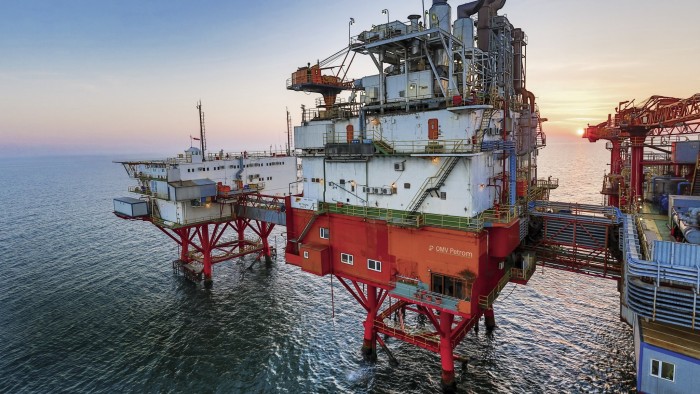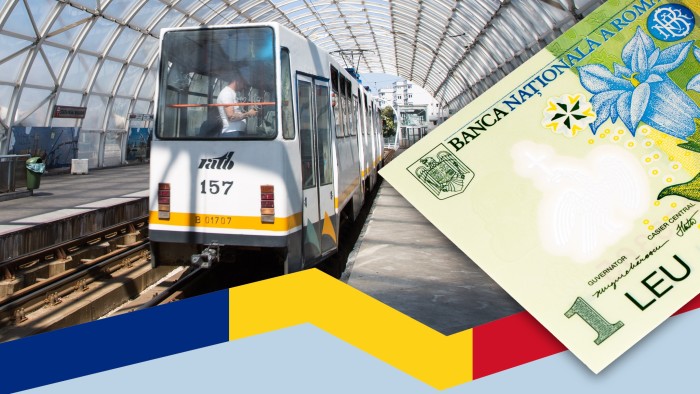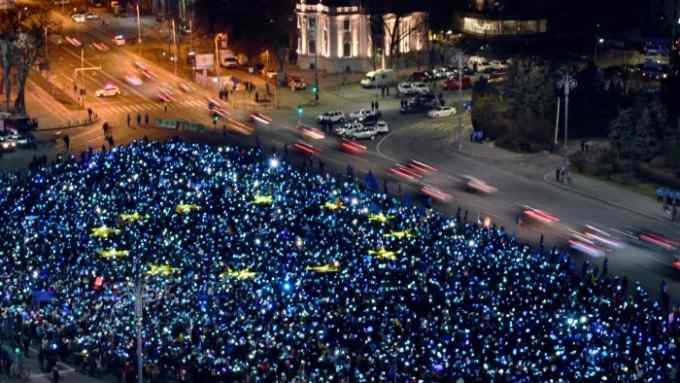Pipeline setback squeezes Romania gas export ambitions

Roula Khalaf, Editor of the FT, selects her favourite stories in this weekly newsletter.
One day in early 2012, a 750ft long gas drilling ship in the Black Sea confirmed a discovery 1,000m below the surface that would send Romania’s politicians into overdrive.
The Deepwater Champion drilling ship — described by Romania’s then-president Traian Basescu as “something out of Star Trek” — had confirmed a reserve in the Neptun block of the Black Sea, estimated at 80-100 billion cubic metres, or up to nine times Romania’s annual consumption.
Drilling had only begun at Romania’s first deep sea well, Domino-1, a year earlier, but already Romanian policymakers were talking about deep water production transforming the country into an important regional gas exporter.
“If the remaining five fields of the Neptun area that will be prospected indicate a similar amount, Romania could become a source of gas not only for itself but for other European countries, too,” Mr Basescu said on a visit to the ship.
The discovery and renewed efforts by European governments to invest in gas transmission infrastructure offered Romania a tantalising economic and geopolitical prospect. The country’s own gas needs could be met internally for many more years but more discoveries would create export opportunities.
“We can already cover our domestic gas consumption — it’s only in winter that we need some imports, amounting to 10 per cent of total consumption,” Toma Petcu, Romania’s energy minister, told the FT.

But, even while analysts are expecting ExxonMobil and OMV will begin production at Neptun from 2020 — raising the prospect of gas self-sufficiency in the near future — plans to connect the fields with western European gas networks are faltering. Commentators are now taking a more sober attitude to the country’s production capacity, estimated by some analysts at 6bcm-12bcm annually. That is dimming hopes of a significant increase in gas exports, despite predictions by some politicians.
Not long after the discovery, the European Commission listed exploiting Black Sea deposits among its priorities in the first EU Energy Security Strategy; a plan crafted to reduce central and eastern Europe’s dangerous reliance on Russian gas, imported via troubled Ukraine, by increasing energy interconnections and diversifying gas supply sources.
Pivotal among the projects that Brussels is supporting is BRUA — a €560m pipeline project to carry gas along a route from Bulgaria, across Romania and Hungary to the Baumgarten hub in Austria.
But the plan is now being scaled back after FGSZ, Hungary’s transmission operator, cut back on its most ambitious elements. FGSZ shocked observers in July when it announced that the only economically viable part of the pipeline would be an expansion of capacity on the existing Romania-Hungary interconnector, from 4.4 bcm to 5.26 bcm annually.
Romanian and Hungarian officials say this scaled-back version of the project should proceed as planned, and that transmission operators are in talks about an “Open Season” — a process where operators can book capacity on the pipeline.
The more modest version of the plan cuts off 200km of pipeline on the Austrian end and significantly scales back the capital expenditure. This would remove the possibility of shipping ExxonMobil and OMV’s Neptun gas to Austria.

The decision is a disappointment for OMV and ExxonMobil, and analysts will look for signals from both on their future Black Sea investment plans for signs of a reaction. They have collectively invested €1.5bn-€2bn in the Neptun bloc since 2012, according to Razvan Nicolescu, a former energy minister and now energy and resources industry leader at Deloitte Romania. The European Commission, which committed a €179m grant to support the original plan, has yet to say how this will affect its original financial commitment.
Speculation surrounds the reasons behind the surprise decision, ostensibly made for commercial reasons. It removes an alternative gas source from the western European market at a time when Russia is pushing ahead with its Nord Stream 2 pipeline to supply gas to Germany via the Baltic Sea.
Gazprom, Russia’s state-run gas group, has also begun laying pipelines for TurkStream — a project to deliver natural gas to Turkey from Russia via the Black Sea. That pipeline could also be extended into south-eastern Europe without crossing Romania, providing Gazprom with yet another supply route that avoids Ukraine.

The move also gives Hungary more certain access to Romanian gas exports as a destination country, rather than a transit territory. Some analysts believe it boosts the prospects of Hungary developing its own modest gas trading hub.
Mr Petcu declined to speculate on the reasons behind the Hungarian operator’s decision but says it is “imperative” that the first phase of the BRUA project — upgrading the gas interconnection with Hungary — is completed. He adds that Romania will proceed with this portion of the project as scheduled.
“Romania expects that all the countries involved in this project will do the same, so that the BRUA phase one will be finished simultaneously in all these countries,” he says.
The BRUA story highlights the uncertain fate of planned transmission projects at a time when new pipelines and LNG terminals are boosting supply capacity to Europe, while aggregate demand is falling.
"If there was a world championship in announcing energy projects, our region would probably win,” says Mr Nicolescu. “Every year new plans are announced. But actually completing them is a different story.”
Some analysts also feel it underlines how Romania’s Black Sea export production will be notable but not revolutionary, and that the region’s transmission map may be in flux for a while longer.
“Of course Neptun is a game changer — at some point it could double Romania’s gas production for several years,” Mr Nicolescu says, adding: “Realistically, the country can aim to become a modest regional contributor to energy security by helping others to diversify their supplies.”
Try the FT’s dynamic country data dashboard

Romania: latest news and live data
See the latest Romanian business and finance news, alongside economists’ forecasts for GDP, inflation, current account and the leu-euro exchange rate — all in one place

Comments